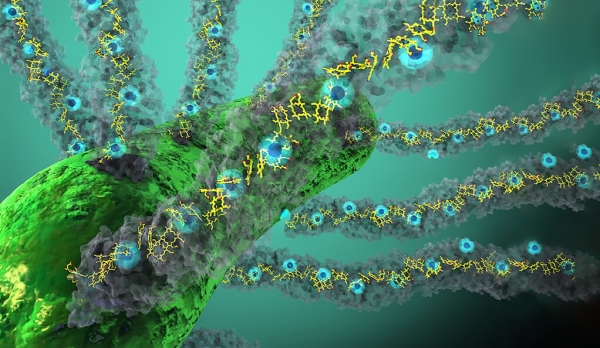The natural world possesses its own intrinsic electrical grid composed of a global web of tiny bacteria-generated nanowires in the soil and oceans that “breathe” by exhaling excess electrons.
In a new study, Yale University researchers discovered that light is a surprising ally in fostering this electronic activity within biofilm bacteria. Exposing bacteria-produced nanowires to light, they found, yielded up to a 100-fold increase in electrical conductivity.
The findings were published Sept. 7 in the journal Nature Communications,
“The dramatic current increases in nanowires exposed to light show a stable and robust photocurrent that persists for hours,” said senior author Nikhil Malvankar, associate professor of Molecular Biophysics and Biochemistry (MBB) at Yale’s Microbial Sciences Institute on Yale’s West Campus.
Read more at Yale University
Image: Bacteria producing nanowires made up of cytochrome OmcS. (Credit: Ella Maru Studio)


